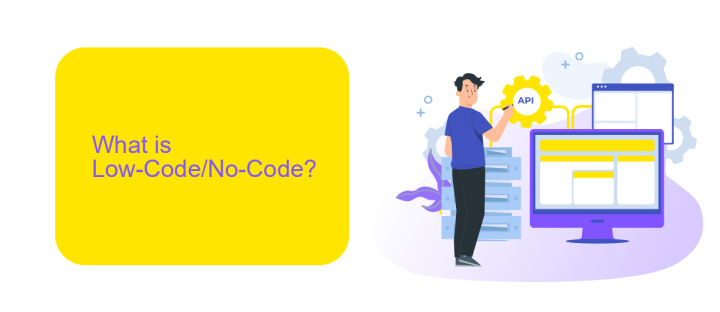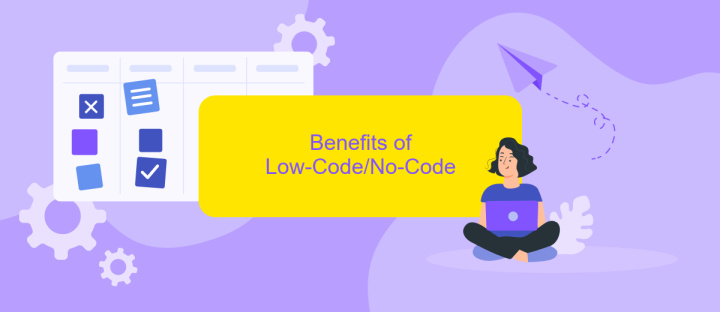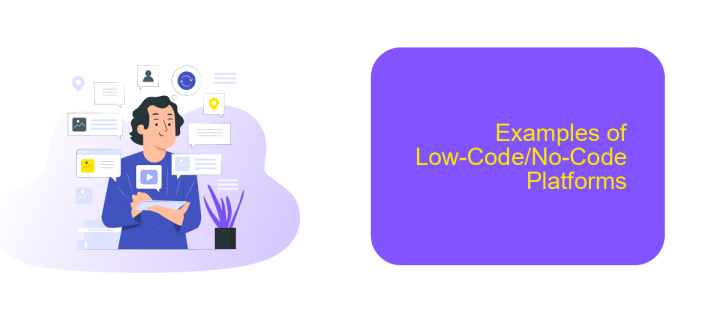No-Code Low-Code
No-Code and Low-Code platforms are revolutionizing the way businesses develop software by enabling users to create applications with minimal to no programming skills. These tools empower non-developers to build, customize, and deploy applications quickly and efficiently, significantly reducing development time and costs. This article explores the benefits, use cases, and future potential of No-Code and Low-Code solutions.
Introduction
The rise of No-Code and Low-Code platforms has revolutionized the way businesses develop and deploy applications. These platforms empower users, regardless of their technical expertise, to create functional applications quickly and efficiently. By minimizing the need for extensive coding skills, they democratize software development and expedite digital transformation.
- Ease of use: Intuitive drag-and-drop interfaces.
- Cost efficiency: Reduced need for specialized developers.
- Speed: Rapid prototyping and deployment.
- Flexibility: Adaptable to various business needs.
One of the standout features of No-Code and Low-Code platforms is their ability to integrate seamlessly with other services. Tools like ApiX-Drive simplify the process of connecting different applications, enabling automated workflows and data synchronization. This integration capability not only enhances productivity but also ensures that businesses can leverage their existing tools to their fullest potential.
What is Low-Code/No-Code?

Low-Code and No-Code platforms are revolutionizing the way applications are developed by allowing users to create software with minimal or no traditional coding. These platforms provide visual interfaces with drag-and-drop capabilities, enabling individuals without extensive programming knowledge to build, customize, and deploy applications quickly. This democratizes software development, making it accessible to a broader audience, including business analysts, marketers, and other non-technical professionals.
One of the key benefits of Low-Code/No-Code platforms is their ability to streamline and automate integration processes. For example, services like ApiX-Drive facilitate seamless integration between various applications and services without requiring complex coding. ApiX-Drive offers a user-friendly interface to set up integrations, ensuring data flows smoothly across different systems. This capability is particularly valuable for businesses looking to enhance productivity and efficiency by connecting disparate software solutions without the need for a dedicated development team.
Benefits of Low-Code/No-Code

Low-code and no-code platforms have revolutionized the way businesses develop applications by enabling faster, more efficient, and cost-effective solutions. These platforms empower non-technical users to create functional applications without extensive coding knowledge, thus democratizing the development process.
- Speed and Efficiency: Low-code/no-code platforms significantly reduce development time by providing pre-built templates and drag-and-drop interfaces.
- Cost Savings: By minimizing the need for specialized developers, businesses can cut down on labor costs and allocate resources more effectively.
- Accessibility: These platforms enable team members from various departments to contribute to app development, fostering a culture of innovation.
- Scalability: Solutions like ApiX-Drive facilitate seamless integration of various services, allowing businesses to scale operations without extensive redevelopment.
- Flexibility: Users can easily make adjustments and updates to applications, ensuring they remain aligned with evolving business needs.
With the adoption of low-code/no-code platforms, organizations can accelerate their digital transformation journeys, reduce operational costs, and enhance collaborative efforts across departments. Tools like ApiX-Drive further streamline the process by offering robust integration capabilities, making it easier to connect various applications and services.
Examples of Low-Code/No-Code Platforms

Low-code and no-code platforms have revolutionized the way businesses develop and deploy applications by simplifying the development process. These platforms enable users with little to no coding experience to create functional applications quickly and efficiently. By offering a visual interface and pre-built templates, they eliminate the need for extensive coding knowledge.
One of the key advantages of these platforms is their ability to integrate with various services and applications seamlessly. For instance, ApiX-Drive is a powerful tool that helps users set up integrations effortlessly. It allows businesses to connect different systems and automate workflows, enhancing productivity and reducing manual effort.
- OutSystems: A robust low-code platform for enterprise-grade applications.
- Bubble: A no-code platform ideal for building web applications.
- Appgyver: A versatile no-code platform for creating mobile and web apps.
- ApiX-Drive: A service for easy integration and automation of workflows.
- Zoho Creator: A low-code platform for building custom business applications.
These platforms provide an accessible way for businesses to innovate and adapt quickly. By leveraging low-code and no-code solutions, organizations can reduce development time, lower costs, and empower non-technical team members to contribute to the application development process.
Future of Low-Code/No-Code
The future of Low-Code/No-Code platforms is poised for significant growth as businesses continuously seek faster and more efficient ways to develop applications. These platforms empower non-technical users to create and modify applications without deep programming knowledge, democratizing the development process. As artificial intelligence and machine learning technologies advance, Low-Code/No-Code platforms will become even more intuitive, allowing for more complex and dynamic applications to be built with minimal effort.
Integration capabilities will also expand, making it easier to connect various systems and services seamlessly. Tools like ApiX-Drive will play a crucial role in this evolution by providing robust solutions for integrating different applications and automating workflows. This will enable businesses to streamline operations and enhance productivity. As the demand for digital transformation continues to rise, Low-Code/No-Code platforms will be at the forefront, driving innovation and enabling rapid deployment of solutions across industries.
FAQ
What is No-Code/Low-Code development?
Who can benefit from No-Code/Low-Code platforms?
Can I integrate different software applications using No-Code/Low-Code tools?
What are the limitations of No-Code/Low-Code platforms?
Is No-Code/Low-Code secure?
Apix-Drive will help optimize business processes, save you from a lot of routine tasks and unnecessary costs for automation, attracting additional specialists. Try setting up a free test connection with ApiX-Drive and see for yourself. Now you have to think about where to invest the freed time and money!

